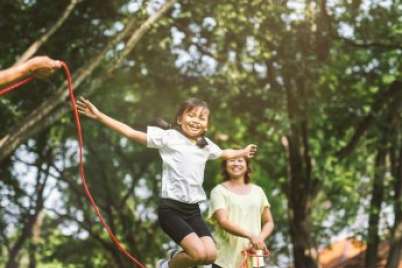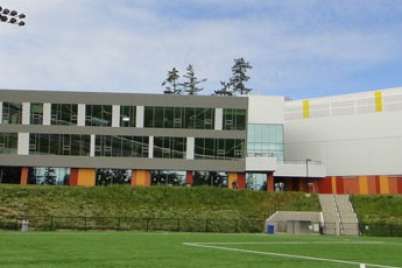
Using mindfulness, music, and movement to develop physical literacy in kids
For Marni Levitt, owner of Move-N-Music and its artistic director, physical literacy and the arts is a natural combination. Using yoga and holistic music as her tools, Marni provides transformative, interactive performances and workshops that engage the imagination and develop physical literacy in children.
“It’s a natural part of a healthy and well-balanced life to express yourself creatively and physically. And that’s where dance and yoga are so powerful,” says Levitt.
As an artist and certified teacher, she breathes mindfulness — the act of being conscious or aware of things — into every aspect of her life. In schools, Marni offers co-curricular programming for students to connect their learning to movement, while extra-curricular programs focus on after-school care, summer camps, and special needs programs, to name a few.
Marni’s articulate, mindful perspective on physical literacy is a breath of fresh air (pun intended). She reminds us of why it’s so important to slow down and breathe, especially when we’re moving. I recently had a chance to speak to Marnie about her approach.
What is the connection between mindfulness and physical literacy?
The activities that I do to help children get a sense of mindfulness are very interactive. And there’s usually a big physical component to them. We start by sitting and playing with sound (“om”) and guided visualization, and then we stand up and move into interactive physical activities.
When I do mindfulness coaching for kids in their homes, either in a small group or for the whole family, often there’s a walking mindfulness component. We play games like, “Imagine you’re on a tightrope”. So you have two people, could be a mom and her daughter, and they’re walking towards each other on an imaginary tightrope and they have to trade places, so it’s kind of like a Twister game. Coordinating breathing with movement.
How do your workshops build physical literacy?
The workshops help to develop body awareness and movement skills, and if someone is already a very kinesthetic learner I will do more physical activities. If you’re more visual, then I might add some colouring at the end.
I’m using arts, culture, and creativity as a tool set to build physical literacy — engaging the imagination along with body movement. I use the analogy of cross-country skiing to teach mindful walking and I want [them] to synchronize breathing with movement.
What’s the first step to leading a more mindful life as a family?
I would start with the morning. The morning can set the tone for the rest of the day. Even sitting for five minutes, either on your own or with a hot cup of tea. Sitting down with a hot drink on the couch, on a cushion, on your bed after you make it, and feeling the connection of where your body is sitting and the feeling of the breath going in and out of your nose. Mindfulness helps us get enjoyment from the very smallest things in life.
How does your experience with West African dance and drumming influence your work with children and how you develop physical literacy?
The amount of joy that comes from half an hour of drumming and dance is just unbelievable. The physical experience of music in the West African tradition, different from the Western music tradition, is that there is no separation between dance and instrument playing.
I usually have students sing a rhythm and then move to a rhythm. [They] get it in their bodies and we might even play games like “Freeze Dance”, for example. That way, they’re getting the experience of music in their body and they’re starting to listen to each other in a group. And then the last step is going on to the instruments — the sticks, the shaker, or the drum.
I’m teaching traditional West African rhythms. They’re singing them first, clapping them on their lap or on the floor, and then we stand up and they’re stomping them in their feet, moving and adding their own creativity. I’ll show them usually one or two traditional moves that I learned when I was in Guinea, West Africa, and then I’ll have them invent their own, so long as it goes with the rhythm.
How has being a physically literate person yourself influenced the job that you do?
Huge influence! And that’s why I advocate health and wellness, mind-body wellness, and mindfulness for teachers, parents, and anybody who works with kids. It certainly has helped me be aware of my own emotional experiences in certain situations, and therefore be better able to attend to myself.
For more information about Marni and the programming she offers through Move-N-Music, check out her website or email her directly at [email protected]. In the meantime, visualize yourself in our tightrope activity.






This approach looks good for special needs